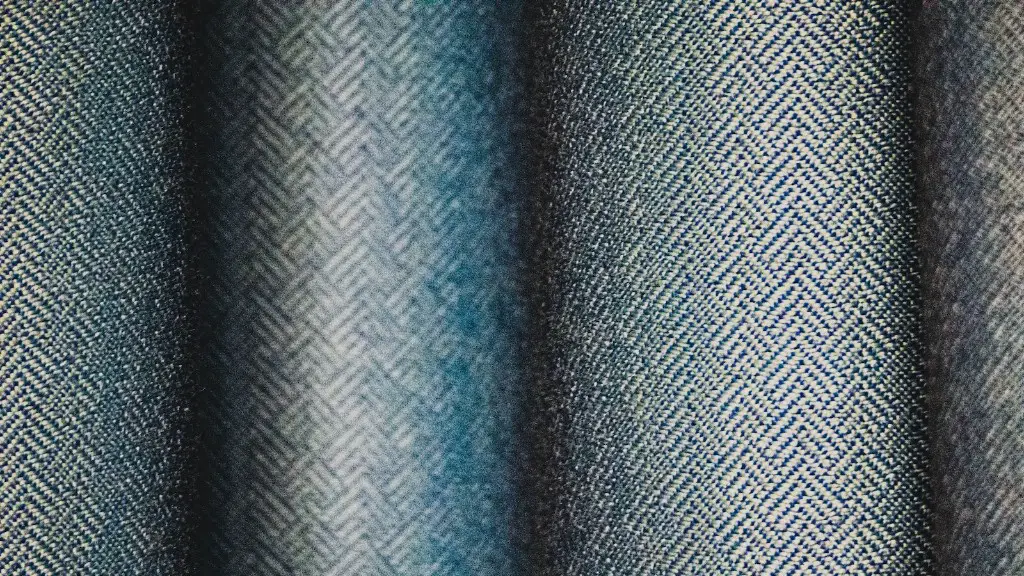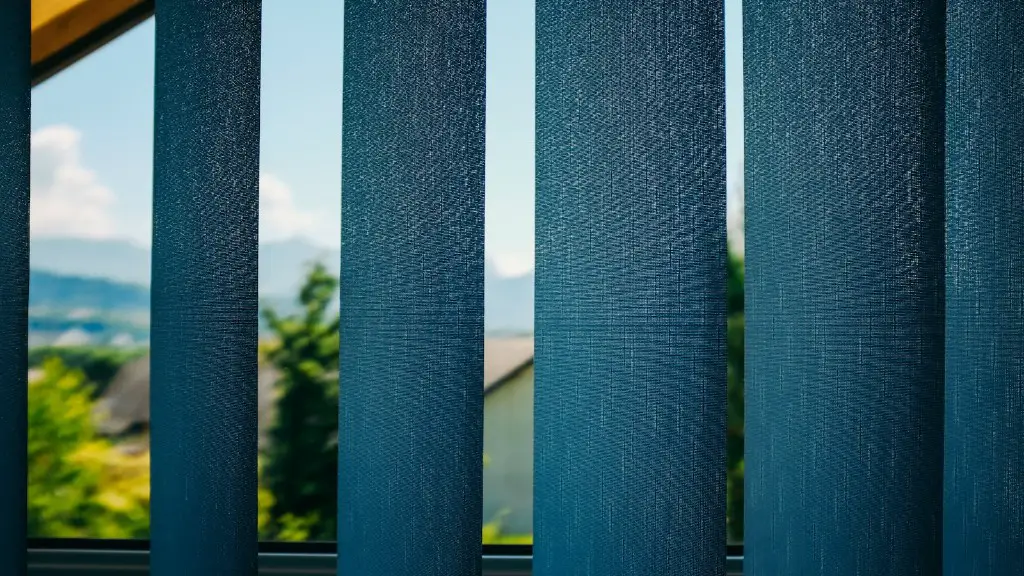Curtains can add a touch of luxury to any room, but they can be a bit tricky to make. This guide will show you how to make curtains that look great and will last for years.
Making curtains is a relatively simple process that can add a splash of color and style to any room in your home. Follow these steps to make curtains that will look great and last long.
1. Choose your fabric. Curtains can be made from a variety of different fabrics, so choose one that will complement the decor in your room and that is made from a durable material.
2. Cut the fabric to size. Measure the width and height of your window and add a few inches to each measurement to allow for hemming. Cut the fabric to size using sharp scissors.
3. Hem the fabric. Fold the edges of the fabric over 1/2 inch and iron them down. Then fold the fabric over again 1 inch and iron. Sew a straight stitch along the inner edge of the fold to create a clean hem. Repeat this process for the bottom and top edges of the fabric.
4. Hang the curtains. Use a curtain rod to hang your curtains. Place the rod at the desired height and mark the spots where the brackets will go. Drill holes and screw in the brackets. Then slide the curtains onto the rod and hang them up!
Is it cheaper to make or buy curtains?
Sewing your own curtains can save you money, but it may not be worth it if it takes up too much of your time. Consider the convenience factor when making your decision.
To make sure you have a 1 inch fold all the way across your fabric, use a seam gauge. First, fold your fabric over by 1 inch. Then, use the seam gauge to measure from the edge of the fabric to the fold. If the measurement is 1 inch, then you have a 1 inch fold all the way across.
How much fabric do I need to make curtains
If you’re looking to create full, voluminous curtains, you’ll need to factor in 1 1/2 to 2 1/2 times the width of your window. This will give you the amount of fabric you need to create the look you’re going for. Keep in mind, it’s always better to err on the side of too much fabric rather than too little. That way, you can always use any extra fabric for cushions or tiebacks.
If you’re looking for the best fabrics for your window treatments, linen and linen blended with rayon are your best options. These fabrics are much more durable and resistant to wrinkling and fading, making them a great investment for your home.
Is it difficult to make your own curtains?
Curtains are a surprisingly easy beginner sewing project! Sewing curtains is just lots of long straight stitches, when you know the right supplies to get. Learn to sew curtains with these tips and inspiration.
If you want to make your room look larger, you should hang high curtains with long vertical stripes. This will create the illusion of height, which is excellent for low ceilings. However, if you want to make your room appear smaller, you should hang short curtains with horizontal stripes. This will shorten your wall height and make the room appear smaller.
Can you make curtains out of any material?
When measuring for your curtains, be sure to account for the full width of the window, from top to bottom. To determine how much fabric you’ll need, simply multiply the total width of the window by the number of curtain panels you wish to hang. For example, if you have a window that is 80 inches wide and you want to hang four panels, you’ll need a minimum of 10 yards of fabric.
Start with measuring a window to decide the size of your curtains. Next, cut your fabric to size, trim any excess fabric, and hem the sides and bottom. Finally, install your curtain rod and hang your curtains!
How do you make pleats for curtains
Be sure to follow the care instructions on the fabric to edge Fold the top edge of the curtain down. Some fabrics will require you to use an iron on a low setting to create a neat edge; follow the care instructions for your fabric. Once you have completed the top edge, move to the side edges. Again, use the care instructions for your fabric to determine the best way to create neat edges. Once you have finished all four edges of your curtain, hang it up and enjoy your handiwork!
If you want your panels to look ample and drapey, you should make sure that they have a combined width that is 2 to 2½ times the width of the window. Exceptions: If you’re hanging curtains just to frame a window and don’t intend to shut them, you can round down to 1½ times the width.
How many inches out should curtains be?
When choosing blinds or curtains for your windows, the rule of thumb is to go 8″-12″ wider than your window. This will ensure that your window is properly covered and that the blinds or curtains don’t look too small.
When measuring for standard floor-length curtains, you should allow for a three to four-inch hem, plus another three to four inches for the double fold. This means that your curtains should be six to eight inches longer than where you place your pins.
Can I sew my own curtains
Curtains can be a great project for beginners because they mostly require straight sewing. However, there are still some basics that you should master before starting to make your own curtains. This page will direct you to all the information you need to successfully make your own curtains and window treatments.
This is a step by step guide to pattern matching curtain fabric. You will need to measure the length of the pattern, cut the drops at the bottom of the curtain, join the patterns along the seam, and draw a line along the rear of the crease using vanishing marker. Once everything is pinned together, you’re ready to start sewing!
Should curtains touch the window?
Curtains typically look best and work more efficiently when hung higher and wider than your window frame. This allows more light to be let in and creates the illusion of a larger window. To achieve this, plan to hang the curtain rod several inches above the window trim, with each side hanging out a few inches past the edge of the windowsill. This will give your curtains a grand look and make your windows appear larger.
To ensure that your cuts are perfectly straight, it is best to use a ruler or a straight edge when cutting fabric. Begin by finding a straight edge, then line it up with the corner of your table to create a 90 degree angle. Next, cut along the length of your table ordraw a straight line with your ruler and cut down this.
Warp Up
To make curtains, you will need:
-A measuring tape
-Scissors
-Curtain fabric
-Pins
-A sewing machine
-Thread
1. Measure the width and height of your window. Add an extra 3-4 inches to both the width and height to allow for hems.
2. Cut your fabric to size.
3. Hem the top and bottom of the fabric. To do this, fold over the fabric 1/2 inch and then again 1/2 inch. Pin in place and sew a straight stitch along the folded edge.
4. Hem the sides of the fabric. To do this, fold over the fabric 1 inch and then again 1 inch. Pin in place and sew a straight stitch along the folded edge.
5. Create a heading for your curtains. To do this, fold over the top of the fabric 2 inches and then again 2 inches. Pin in place and sew a straight stitch along the folded edge.
6. Attach the heading to your curtain rod. To do this, simply slide the fabric on to the rod and position it where you want it.
Making your own curtains is a great way to save money and add a personal touch to your home. There are a few things to keep in mind when making curtains, such as the fabric you choose and the size of the window. With a little planning and effort, you can easily make beautiful curtains that will add style and personality to your home.





